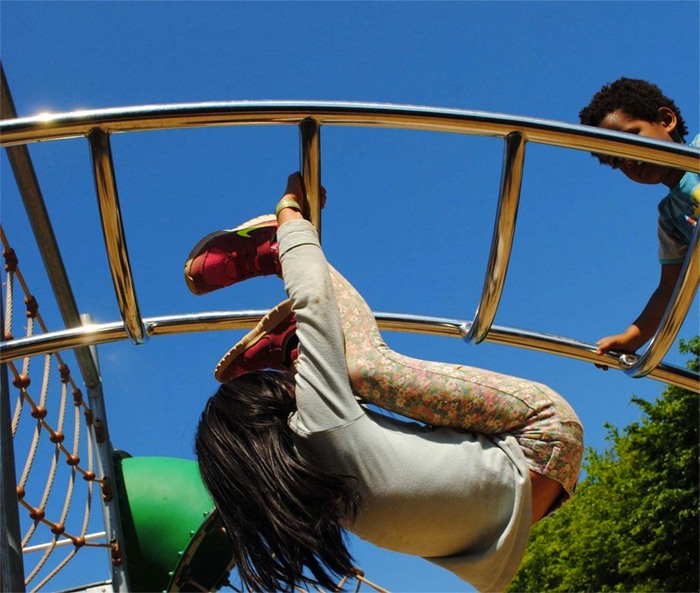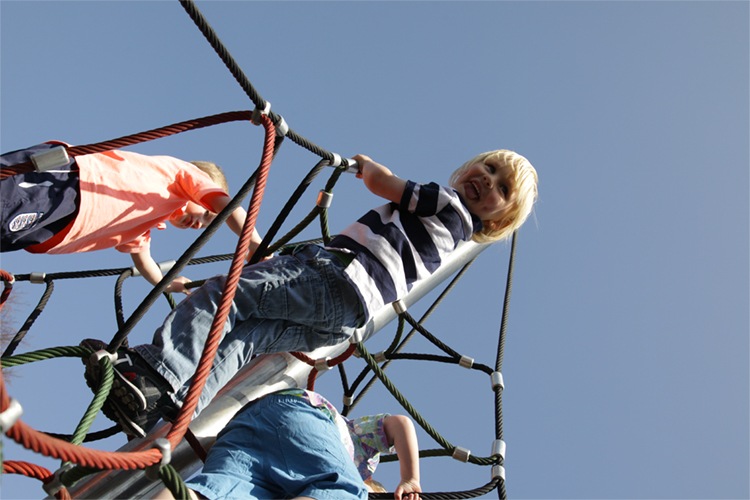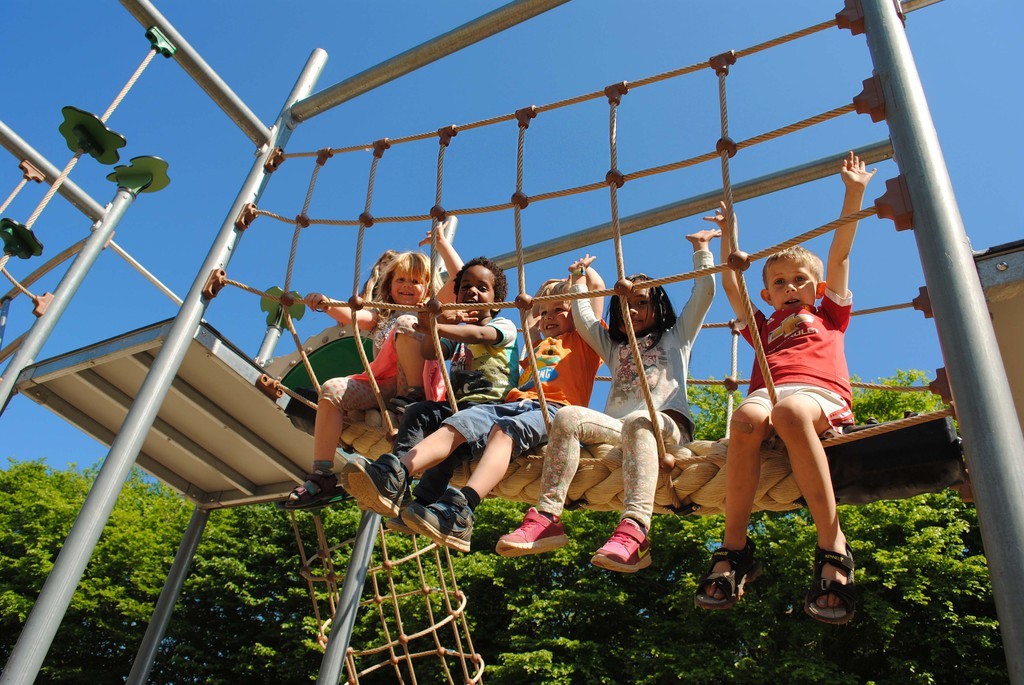We all know that children are a lot less active than they should be.
They spend way too much time sitting – at school, in front of screens, and getting driven about.

Everyone worries about obesity levels in unfit children, but did you know that even normal weight children have lost their physical strength?
Many of them can’t support their body weight and most have weak grips. According to Dr Nathan Hasson, Consultant in General Paediatrics and a Consultant in Paediatric Rheumatology at The Portland Hospital, children now have about one quarter of the muscle strength that children a generation ago had. This is true even for children actively engaged in sports. Dr Hasson measures children’s strength by testing 22 main muscle groups. His studies show that whereas a “normal” child of a generation ago would have tested 22 out of 22, a “normal” child today tests five out of 22. The new “normal” for grip strength is one third of what it used to be.
Worryingly, Dr Hasson says that if a child has not learned muscle memories by the age of six, their body will not retain this muscle strength – if activity stops, muscles deteriorate rapidly. There seems to be a critical window in children’s development when huge amounts of physical movement need to happen if children are to have strong bodies for the rest of their lives. Babies enter this world kicking, wriggling, and ready to move. They have such a powerful grip reflex during their first six months that they can hold onto a bar and suspend their body weight. This reflex gradually disappears, but research suggests that it only fades because it’s not used.
Infants spend lots of time strapped into car seats and buggies, and then children grow up sitting in classrooms and in front of screens. Opportunities for actually moving all the different parts of the body and for building strength keep diminishing – and numerous health and safety fears don’t help. And this is true for all of us. We have engineered our lives so that although we do a lot of typing and swiping, we rarely climb or carry very heavy loads. We are not hanging, swinging from arm-to-arm, or pulling up and climbing – all of which use every bit of tissue from the fingers to the lower body. Unless we do these movements, then the different muscles that are needed to support us don’t develop properly.
One of the areas of the body where we are all weakest is upper body and hand strength.
Legs generally carry most people around every day and leg strength grows as we do. But we need strong muscles everywhere. Upper body strength is important for the daily demands placed on the arms, shoulders, and back. Many common shoulder and back problems are the result of muscle and joint weaknesses, when loads are transferred to vulnerable ligaments. Dr Hasson is now seeing joint and disc problems in children that used to only be found in older people.
Katy Bowman is a Biomechanics Specialist in natural movement and development and has helped thousands reduce chronic pain, increase bone density, and improve metabolic health through better movement. She says:
Our lifestyle has resulted in physical atrophy at all stages of life to the point that we are physically unable to support ourselves and are suffering all the issues that come with tissue destruction.”
Katy Bowman, Nutritious Movement.
It’s not just about exercise or just moving more. The key thing is moving more of you.
Katy’s approach is to build more movement into every single part of every day. She has even removed much of the furniture from her home so that her family sit on the floor rather than sink into the sofa, and her children have an indoor jungle gym to play on. However her emphasis is always on getting moving outdoors in nature.
We all know our culture is sedentary and that we spend hours each day being inactive. But we have a responsibility to make sure that those first six years in a child’s life have as much movement in them as possible and then make the effort required to ensure this activity level continues as they grow. Dr Hasson believes that children should be spending at least three hours a day being active. He says that it is essential for young children before the age of six to spend as much of their day as possible moving.

Columbus multi-play unit Safe & Sound Playgrounds
All children should be given as many opportunities as possible to develop their muscle strength.
It’s easy enough now to get exercise – but as Katy Bowman says:
Exercise is not movement.”
Katy Bowman, Nutritious Movement.
What everyone needs is more all-over exercise and more varied movement. Children need to be able to strengthen all the different parts of their body. One of the few places where they are able to be active in an all-round way is in playgrounds. Most environments offer very few places for big movement. In the absence of trees to climb and wildernesses to explore, playgrounds are great places to practice all the movements that make bodies stronger – they provide equipment that encourages multiple ways of developing and stretching physical limits. Children need to learn to support their weight while climbing; they need to be able to hang by their hands. Their grip strength needs to improve.
So let’s create play environments for children that offer lots of different ways of being active.

Climbing net by Massey and Harris
Take children to playgrounds regularly!
Let them explore and be challenged by all the playground equipment – but remember, expecting them to be able to hang or swing from their arms immediately if they haven’t been doing it all their lives, is often unrealistic. Start easy and take time so that their tissues can adapt. Maybe hold their legs as they try hanging. Maybe they hang for just a second. Encourage them to keep trying difficult things so that their muscles – and their strength – develop too. All that climbing, hanging (right side up or upside down), and swinging on overhead equipment is great for developing upper body strength and challenges children to move in new and creative ways. See how quickly their bodies can learn to do actions they thought they couldn’t – and see how pleased they are when they realise they can. Keep on supporting these vital activities as they grow and their bodies will thank you for it.
Don’t forget that all of us – not just children – need to be regularly experiencing a wide range of movement throughout the day. Our bodies evolved to move in a host of different ways – can you hang from your arms? Can you swing from bar-to-bar? Why not join in the fun!

